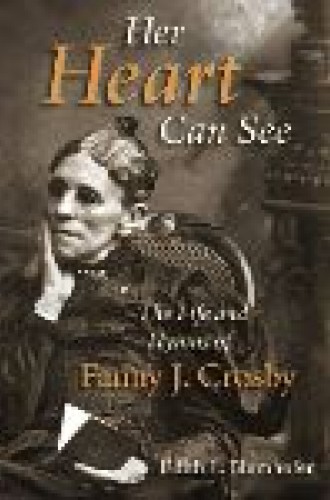Her Heart Can See
Readers may recognize Fanny Crosby’s hymns, including “Blessed Assurance” and “I Am Thine, O Lord,” before they recognize her name. Hence the need for this biography.
Drawing on extensive research in primary and secondary materials, Edith Blumhofer—professor of history and director of the Institute for the Study of American Evangelicals at Wheaton College in Illinois and author of the fine biography Aimee Semple McPherson: Everybody’s Sister (Eerdmans)—has reconstructed both the physical landscapes and the relational networks in which Crosby traveled. Blumhofer understands Crosby’s continuing impact as a token of her ubiquity during the 19th-century heyday of Protestant song, and she hopes to give the hymnwriter her due as a linchpin of popular Protestant musical culture.
Blumhofer faced a major obstacle in researching this study: Crosby, blind from infancy, never kept a journal. Only in her 80s did she dictate her reminiscences, which were published in 1906. Many details about Crosby’s life are simply unknown. What we do know has come to us from her own selective memory and from others’ uncritical remembrances.
In face of this challenge, Blumhofer chose to delve deeply into sources charting Crosby’s Old and New England roots. She writes vividly of the small New York town where Crosby was born and of the rapidly urbanizing New York City, where she attended the Institution for the Blind beginning in 1835.
Blumhofer also provides a full account of the origins of 19th-century religious song, including the various traditions of Sunday school songs, reform movement anthems, revival hymns and compositions for congregational singing. Aided by this richly detailed background, Blumhofer presents compelling readings of Crosby’s most famous lyrics. The deep contextualization helps Blumhofer avoid sentimentalizing the hymnwriter as the blind poetess of legend. She instead depicts Crosby as an independent-minded participant in a vibrant (and profitable) cultural phenomenon.
Blumhofer offers an extraordinarily lively picture of 19th-century evangelical culture, with the implication that Crosby lived and worked at its center, but she cannot deliver the same level of detail about the hymnwriter’s engagement with that culture. Our sense of her independence, which Blumhofer wants to demonstrate, unavoidably suffers from the fact that Crosby left no independent, contemporary record of her experiences.
Blumhofer responsibly refuses to speculate, but some details of Crosby’s personal life—her mother’s first marriage, Crosby’s own unusual marriage and her physical frailty and childlessness—cry out for a freer interpretive hand. The book discusses Crosby’s precursors and collaborators (including Phoebe Palmer Knapp and Ira D. Sankey) in great depth, but we learn very little about Crosby’s own attitudes toward these lights of 19th-century Protestantism.
Other aspects of Crosby’s story invite exploration, even in the absence of personal letters or journals. What cultural work, for instance, has Crosby’s image as the blind poetess performed? Blumhofer claims that Crosby’s blindness was more determinative for her life’s direction than her gender. It made her a curiosity and thus opened many doors. Nevertheless, a tantalizing question remains: How might 19th-century conceptions of both disability and womanhood have reinforced one another in Crosby’s case?
Blumhofer, in search of a Crosby who made her own way, downplays her embeddedness in the 19th-century ideology of the woman’s sphere. This ideology, which at once restricted and empowered women’s activity, understood women as more spiritual than men and therefore naturally suited for such socially redemptive efforts as temperance work and Christian missions—projects to which Crosby devoted much energy. As a woman, Crosby exercised her power within the culture’s limits.
All in all, the book succeeds in welcoming the reader into Crosby’s world. If our view of the hymnwriter herself remains perforce obscured, Blumhofer allows us to see clearly the many people and places that shaped Crosby’s work.





